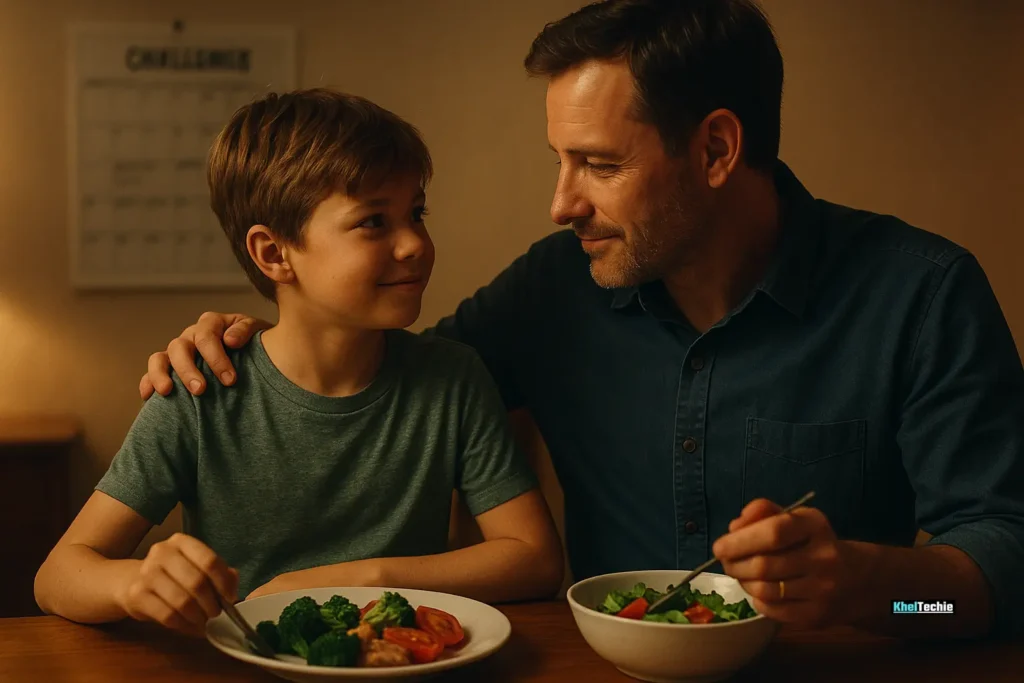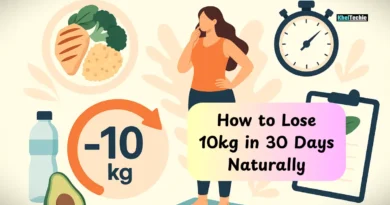Fun & Healthy Wellness Challenges for Families in 2025
Getting the whole family to eat healthy or exercise together feels like herding cats!
If you’ve ever thought this, you’re not alone, Modern life is fast-paced, screen-heavy, and often sedentary. For many parents, encouraging kids to move more, eat better or even talk at the dinner table can feel like a full-time job. That’s where wellness challenges for families come in, a structured, fun, and flexible ways to improve physical and mental well-being together.
In this article, we’ll explore what these challenges are, why they matter, how to start one, and common mistakes to avoid. Whether you’re looking for a weekend project or a month-long lifestyle shift, we’ve got you covered.
Also read – How to Create Personalized Workout Calendar

What Are Wellness Challenges for Families?
Think of them as mini adventures toward a healthier lifestyle but with your whole Crew(family) involved.
A family wellness challenge is a planned activity or series of tasks designed to promote physical activity, healthy eating, emotional well-being, and quality time among family members. These challenges can be short-term (a week) or long-term (30+ days), depending on your goals.
Types of Family Wellness Challenges
| Type | Goal | Example |
|---|---|---|
| Nutrition Challenge | Improve eating habits | Eat 5 veggies this week |
| Fitness Challenge | Increase movement | Take a daily walk together |
| Screen-Free Challenge | Reduce digital dependency | No screens after dinner |
| Mindfulness Challenge | Enhance emotional health | Gratitude journal circle |
These aren’t just about fitness, they’re about creating shared experiences and building healthy habits that last.

Why Wellness Challenges for Families Matter
In today’s busy world, bringing the family together for wellness can feel impossible but it might just be the missing link to better health. According to a 2024 study in BMC Public Health, when toddlers from underprivileged homes participated in guided wellness programs, their emotional development soared. This shows how early wellness habits go beyond physical fitness, they build empathy, confidence, and resilience.
Similarly, another 2024 study in the Maternal and Child Health Journal found that families doing a virtual 12-week nutrition challenge saw real improvements in their eating habits, Not just the kids, parents too! From cutting down junk to eating mindfully, these challenges created healthier kitchens and stronger family bonds.
The takeaway? Wellness challenges aren’t just trendy, they’re powerful. They help you reconnect, de-stress, and grow together. When families support each other through small lifestyle changes, it builds trust, consistency, and joy.
So next time you’re unsure how to start improving your family’s health, think simple & Start a challenge, Keep it fun. And remember, you’re not just building healthy habits, you’re building memories and emotional strength that lasts a lifetime.
Small steps today = big wins tomorrow.

How to Launch a Family Wellness Challenge
Starting a challenge doesn’t have to be complicated. Here’s how to do it right:
Step 1: Choose the Right Challenge
Ask yourselves:
- What area needs improvement?
- What does everyone enjoy?
- How much time can you commit?
Start with something achievable, like a 7-day hydration challenge or a screen-free evening.
Step 2: Set Clear Goals
Use the SMART goal framework:
- Specific
- Measurable
- Achievable
- Relevant
- Time-bound
Example: “We will go for a 30-minute bike ride 3 times this week.”
Step 3: Make It Fun
Add games, music, rewards, or themes:
- Zombie Tag Walk = run if someone says ‘zombie!’
- Dinner Trivia Night = earn points for correct answers
Use apps like Habitica or Streaks to gamify progress.
Step 4: Track Progress Together
Use a whiteboard, app, or printable tracker. Let kids take charge of checking off boxes.
Visual progress motivates everyone.
Step 5: Celebrate Wins
Small wins deserve big cheers! Celebrate with:
- A special meal
- A movie night
- A family dance party
This builds momentum and positive associations.

Common Mistakes to Avoid
Even with the best intentions, some wellness challenges can fall flat. Here are common pitfalls and how to avoid them:
1. Overly Ambitious Goals
Setting unrealistic goals can lead to frustration and burnout. Start small and gradually increase the challenge’s intensity.
2. Lack of Inclusivity
Ensure activities are suitable for all family members, regardless of age or fitness level. Adapt challenges to accommodate everyone’s needs.
3. Poor Planning
Without a clear plan, challenges can become chaotic. Outline activities, rules, and tracking methods before starting.
4. Ignoring Mental Health
Focusing solely on physical health neglects the importance of mental well-being. Incorporate activities that promote emotional health, like mindfulness or open family discussions.
5. Lack of Follow-Through
Consistency is key. Ensure regular check-ins and maintain enthusiasm throughout the challenge.
Also read – How to Create a Simple Morning Workout Routine

Conclusion: Ready to Take the First Step?
Embarking on a family wellness challenge is a proactive way to enhance your family’s health and strengthen bonds. Remember, the goal isn’t perfection but progress. Start small, stay consistent, and celebrate every victory along the way and By making health a shared mission, you’re teaching your kids lifelong skills while strengthening your bond.
So, what are you waiting for? Drop a comment below with your favorite family wellness idea or share how you’ve tackled challenges at home!. Share this post with a friend or family member who might enjoy a little wellness boost.
Frequently Asked Questions
What age is appropriate for wellness challenges?
Any age! Even toddlers can join simple challenges like “Jump Like Frogs” or “Colorful Plate Day.” Just tailor activities to their abilities.
How long should a wellness challenge last?
Most experts recommend starting with 7–21 days. Shorter challenges build confidence; longer ones create habit-forming routines.
Can I do these challenges with a busy schedule?
Yes! Try micro-challenges:
Walk to school twice a week
One veggie per meal
Family stretch before bed
How do I keep my kids motivated?
Gamify it:
- Use stickers or stamps
- Create a reward chart
- Offer experience-based rewards (e.g., a park visit)
Kids love choices, let them pick the next challenge!
What if someone quits halfway through?
It’s okay! Treat it as a learning moment. Ask:
- What made it hard?
- How can we adjust?
Flexibility keeps motivation alive.
Do wellness challenges really work?
Yes, especially when done consistently. Research shows that group accountability and shared goals significantly increase success rates.
Can we do virtual wellness challenges with extended family?
Absolutely! Use apps like Zoom, Kahoot, or Google Forms to connect with cousins, grandparents, or friends across the country.
How do I handle resistance from teens?
Teens want autonomy. Involve them in planning:
Let them choose the challenge
Allow tech integration (e.g., TikTok dance challenge)
Focus on benefits they care about (energy, sleep, mood)
Can wellness challenges replace regular exercise or therapy?
They complement them! If your family has specific health concerns, consult a pediatrician or therapist first.
What Are Some Simple Wellness Challenges to Start With?
Hydration Challenge: Drink a set amount of water daily.
Step Count Challenge: Aim for a daily step goal.
Mindful Eating Challenge: Eat meals without distractions.
Screen-Free Evenings: Designate evenings without screens
How Do We Measure Success?
Use trackers to monitor progress. Success can also be measured by improved moods, better sleep, or increased energy levels.




